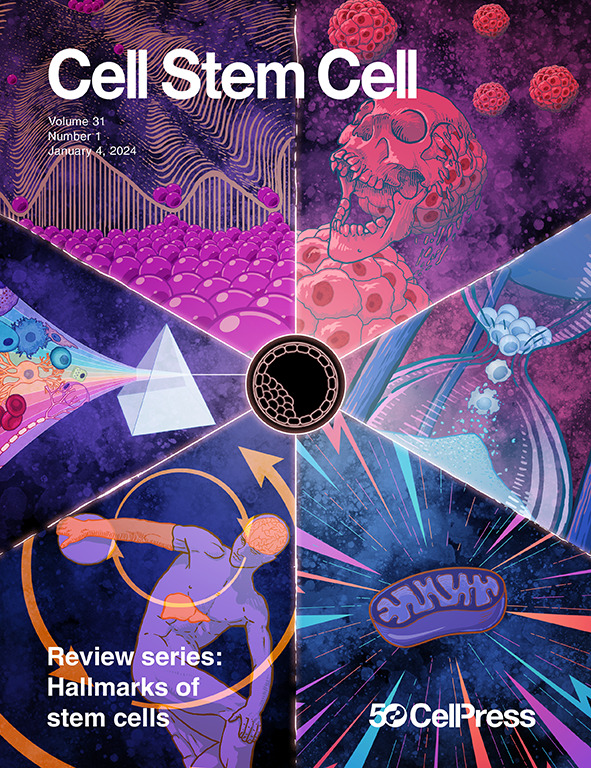通过远端肾元与输尿管芽融合整合人肾类器官收集系统
IF 20.4
1区 医学
Q1 CELL & TISSUE ENGINEERING
引用次数: 0
摘要
肾脏通过一系列平行的肾单位来维持体内平衡,这些肾单位在发育过程中融合成一个收集管系统,建立了排泄代谢废物的基本管道。来源于多能干细胞的人肾类器官(Human pluripotent stem cells [hPSCs])产生缺乏cd的肾单位,并以盲端小管终止,限制了它们的功能潜力。在这里,我们描述了一个发育启发的hPSC分化系统,该系统通过与输尿管芽(UB)祖细胞的诱导肾原间质组装来解决这一缺陷,导致CD网络通过与远端小管融合在肾类器官中功能整合。肾元融合的发生是典型的,并受近端-远端肾元模式的调节,这可以通过发育途径的时间操纵来调节。这项工作为探究肾元- ub融合的原理和机制提供了一个平台,并为具有收集系统的无障碍肾元工程提供了一个框架,这是功能肾组织新生的重要一步。本文章由计算机程序翻译,如有差异,请以英文原文为准。

Integrating collecting systems in human kidney organoids through fusion of distal nephron to ureteric bud
Kidneys maintain homeostasis through an array of parallel nephrons, which fuse during development to a system of collecting ducts (CDs), establishing the essential luminal pathway for excretion of metabolic waste. Human kidney organoids derived from pluripotent stem cells (human pluripotent stem cells [hPSCs]) generate nephrons that lack CDs and terminate as blind-ended tubules, limiting their functional potential. Here, we describe a developmentally inspired hPSC differentiation system that addresses this deficiency through assembly of induced nephrogenic mesenchyme with ureteric bud (UB) progenitors, leading to a CD network functionally integrated in kidney organoids through fusion with the distal tubule. The nephron fusion occurs stereotypically and is regulated by proximal-distal nephron patterning, which can be modulated through temporal manipulation of developmental pathways. This work provides a platform for interrogating the principles and mechanisms underlying nephron-UB fusion and a framework for engineering unobstructed nephrons with collecting systems, an important step toward de novo generation of functional kidney tissue.
求助全文
通过发布文献求助,成功后即可免费获取论文全文。
去求助
来源期刊

Cell stem cell
生物-细胞生物学
CiteScore
37.10
自引率
2.50%
发文量
151
审稿时长
42 days
期刊介绍:
Cell Stem Cell is a comprehensive journal covering the entire spectrum of stem cell biology. It encompasses various topics, including embryonic stem cells, pluripotency, germline stem cells, tissue-specific stem cells, differentiation, epigenetics, genomics, cancer stem cells, stem cell niches, disease models, nuclear transfer technology, bioengineering, drug discovery, in vivo imaging, therapeutic applications, regenerative medicine, clinical insights, research policies, ethical considerations, and technical innovations. The journal welcomes studies from any model system providing insights into stem cell biology, with a focus on human stem cells. It publishes research reports of significant importance, along with review and analysis articles covering diverse aspects of stem cell research.
 求助内容:
求助内容: 应助结果提醒方式:
应助结果提醒方式:


